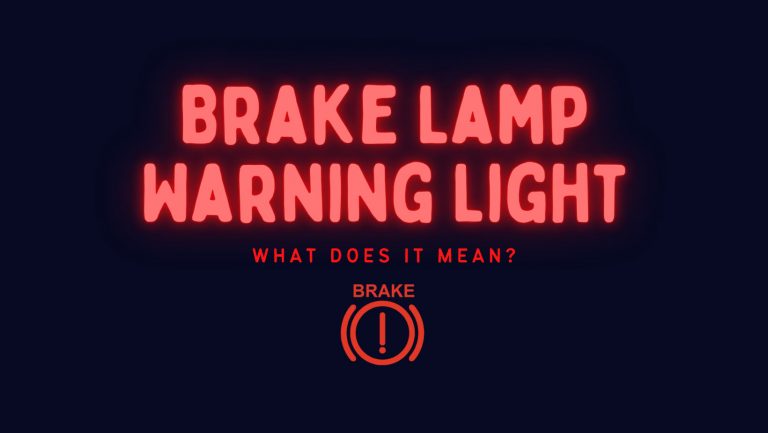The Infamous BMW P1290 Error – Causes and Solutions (Detailed)
If you’re driving a BMW and notice an issue with your car, use a diagnostic tool and you get a reading of the BMW P1290 error code, don’t panic! This article will help walk you through the causes of the code and some potential solutions. Keep in mind that this is not an exhaustive list, but is from my personal experience, and it seems to be fairly consistent with what I found online as well.
If the problem persists after trying these solutions, it’s best to take your car to a professional mechanic. Though I do believe, regardless if you’re a professional or not, this guide will save you a lot of time and point you in the right direction so you know what to look for.
To quickly summarize the issue, a BMW P1290 error code in this scenario related to three key issues, overheating of the engine, a coolant leak and a wastegate actuator issue. Unfortunately, these were all interrelated in this scenario, but I do believe when the BMW P1290 error also appeared a few months prior, it was purely related to an issue that occurred with the wastegate actuator as an individual component.
Let’s get right into it, as I’m sure you’re here to get answers and solve the issue you’re having that’s causing your BMW P1290 error. I’ll step through everything chronologically and please keep in mind, I had an absolute master mechanic that was troubleshooting this issue for me. If you’re doing this alone it may take quite a lot of patience and time.
Before we begin this journey, for context as well, this issue occurred on my 2016 BMW F20 (1 series) which shares the same engine and turbo with other models such as the F30 (3 Series).
First Encounter with the BMW P1290 Error
The first time I encountered the wonderful BMW P1290 error was when we discovered that there was an issue with the wastegate actuator. It was essentially causing the car to go into limp mode as it wasn’t opening and closing the wastegate properly causing a malfunction.
This was quite perplexing at first, as I had no idea what to do and the first mechanic I went to suggested the only solution was to replace the entire turbo which costs a few thousand dollars. After the initial shock of hearing the cost of the solution, I turned to a BMW specialist that I’ve become good friends with since. And we discovered the cause of the issue could potentially be the wiring loom.
This, of course, came after many hours of trial and error, ruling out other possible and more simple solutions such as just replacing the wastegate actuator with a new one, which didn’t resolve anything and cost me close to $1,000 for the part.
Unexpectedly, the last resort was to test the wiring loom, which I didn’t think could be the issue after exhaustively trying to fix the actuator. We tested each individual wire within the loom end to end and discovered that there was no disruption in the loom at all.
Although we read somewhere (I believe it was on the BMW Diagnostic tool) that you can twist the wires to essentially make them work properly just in case they may have been disrupted at all. To our surprise, this resolved the BMW P1290 code and cleared the drivetrain error as well. The car was no longer in limp mode and functioned perfectly well for several months after.
Second Times a Charm When Encountering the BMW P1290 Error
The second time I encountered the BMW P1290 error code was a lot more significant than the first to say the least. The first time, it just came down to re-twisting and playing around with the wiring loom to solve the problem. The second time, I now had overheating issues which caused major problems and consequently damaged the turbo/wastegate.
The overheating was caused by two things, the coolant leaking and the oil leaking. This was a major concern as driving a car that’s overheating can easily damage other components or blow the entire engine.
The person that was driving my car at the time seems to have driven it for a few more miles after the car warned them of overheating, before they decided to pull over and call a tow. At that point, the oil and coolant were empty and damage may have been caused elsewhere.
Upon inspection and testing, it was clear there was a leak coming from somewhere around the engine oil cooler housing as well as coolant draining rapidly when we refilled it with water. Fast forwarding through many hours of work and disassembly, we finally got to the engine oil cooler housing.
Once removed, it was obvious that the part had somehow cracked or melted away a big enough gap around where it should be sealed to the engine that it was causing the leak.
After replacing the engine oil cooler housing and reassembling the parts of the engine we took apart to get to the oil cooler housing, we cranked the engine and everything was working fine until we discovered the BMW P1290 error wasn’t going away and there was some collateral damage. This of course brings me to my favourite part, an issue I thought was forever resolved, the wastegate actuator.
The BMW P1290 Effects on the Wastegate Actuator
After a significant amount of work to get to the oil cooler housing, underneath several components, we may have disrupted the wiring loom throughout the process, which as I mentioned earlier, was the resolution to the wastegate actuator issue I had initially. In the best-case scenario, I was hoping that we just had to re-twist the wiring loom to ensure a solid connection, although this time it wasn’t the case.
Unfortunately, due to the car overheating, the wastegate actuator was actually faulty this time. But not only the wastegate actuator, the actual flap the wastegate controls within the turbo was bent out of shape and wasn’t able to open/close and function properly. The heat directly affected/damaged the internal components of the turbo and the only way forward was to replace the entire turbo and wastegate actuator.
As I was aware of the costs involved to acquire these parts brand new from BMW, hence I wasn’t particularly excited. But I was quite lucky to have a master mechanic on my side and he was in the process of wrecking a BMW F30 which utilizes the same turbo and actuator. I was able to purchase the entire turbo assembly for just $1,000 instead of $6,000 from BMW. What a lifesaver!
Long story short, once installed and calibrated to the car, the infamous BMW P1290 error disappeared and has never come back since. It’s now one and a half years later and the car is flawless and the BMW P1290 error hasn’t reappeared.
The BMW P1290 Resolution in Summary
All in all, the BMW P1290 issue is a very annoying and time-consuming issue to resolve, especially if you’re doing all of the troubleshooting yourself with no guidance on what to look for. So from my experience, there are a few key components to look for. Firstly, test the wastegate actuator to ensure it’s working correctly and test/retwist the wiring loom to ensure it had a solid connection end to end.
If the car has overheated, check the engine oil cooler housing as that could be the culprit causing the leak. During disassembly/reassembly, be cautious to try not to disrupt the wiring loom too much if possible. If the overheating is severe enough, it can warp the internal components of the turbo causing a need to replace the entire unit, including the actuator.
I hope this guide has saved you some time and shed some light on what the BMW P1290 error actually involves.







